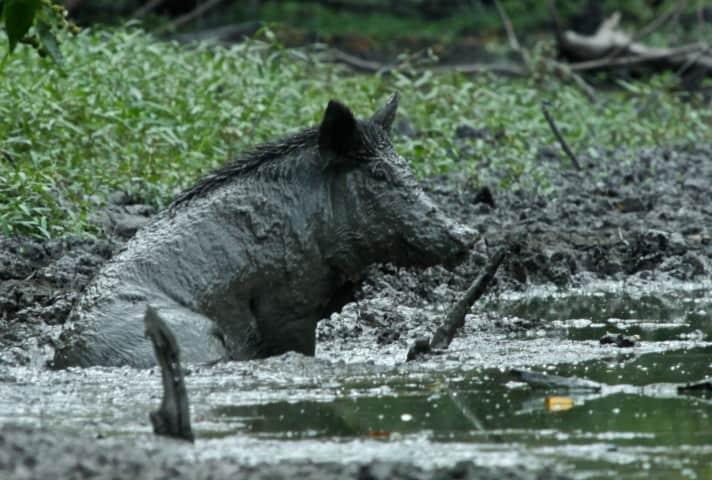Feral Hogs Cause Environmental, Agricultural Woes in Louisiana
OutdoorHub Reporters 08.21.14

Louisiana’s problem with feral hogs is escalating, but nobody really knows just how much damage the half-a-million pigs in the state actually do. The hog population is not only a conservation issue—the animals can significantly impact the economic well-being of landowners and farmers.
Experts estimate that feral pigs do over $1 billion in damages to farms across the United States, especially in Texas, which holds roughly half of the country’s wild swine. Researchers at Louisiana State University’s (LSU) AgCenter are working to put a dollar sign on the destruction that feral pigs are wrecking across Louisiana.
“We know that damage from these animals is on the rise, but we are just not able to detail an amount,” LSU forestry economist Shaun Tanger said in a press release. “We have reports of damage from farmers and some other landowners, but we want to get a better picture of the problem.”
While farmers are mostly worried about what the hogs do to above-ground crops such as sorghum, corn, rice, wheat, and other assorted fruits and vegetables, conservationists say that the pigs are a menace to the forest as well.
“The problem with the wild pigs is their reproductive capability. They reproduce so fast,” LSU researcher Glen Gentry told thetowntalk.com. “If you wiped out 70 percent of them tomorrow and then didn’t touch them again, I’m thinking probably in three years or four years, you’d be back where you are now.”
Gentry said that just one sow and her offspring can produce up to 250 piglets in four years, and feral pigs can reach sexual maturity in as little as six months.
“The females begin reproducing at around 10 months of age and can have up to two litters of four to eight piglets each per year,” Tanger added.
In large numbers, pigs can cause erosion to river banks, eat vast amounts of small animals, destroy the eggs of ground-nesting birds, and threaten the ecosystem at large. LSU researchers will be sending out questionnaires to landowners and farmers to get a better sense of just how much damage these unruly animals cause.
“I believe Texas reported a damage estimate from feral hogs about five or six years ago to be in the $50 million range,” Tanger said. “With those type numbers, I know there is a southeastern-wide push coming down from the federal government to collaboratively figure this thing out.”
Like most of the 35 states with a feral hog population, Louisiana has fairly liberal regulations when it comes to hunting and trapping pigs. Unlike Texas, however, the marshes and dense forests of Louisiana make it hard for hunters to spot pigs from helicopter, which is a popular method of controlling swine.

